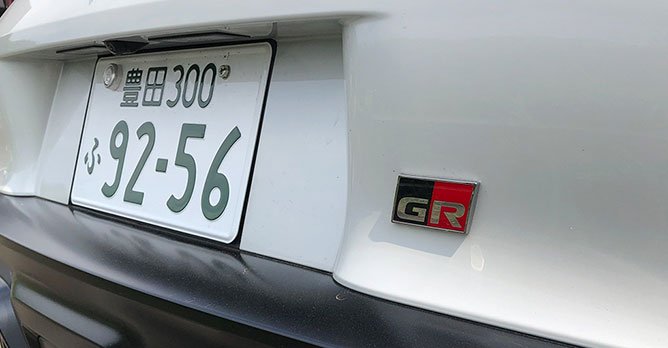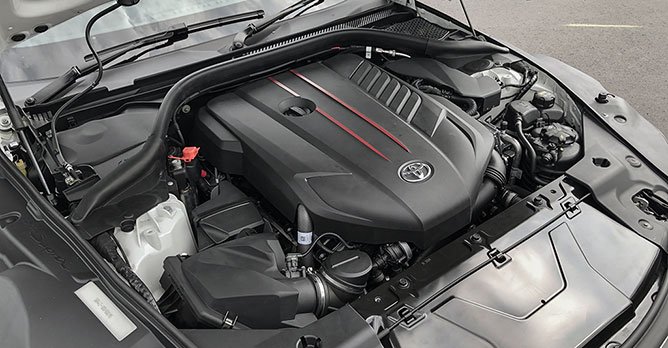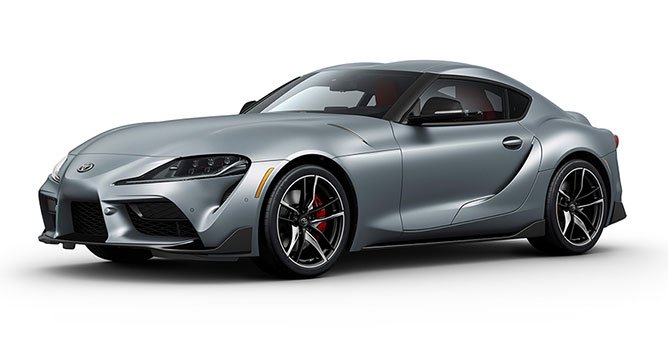Toyota GR Supra: Everything you should know about it
27 Aug 2019|23,373 views
After two decades, Toyota's sports car bearing the historic moniker is back. No more concept cars, no more teasers and no more camouflaged stories. We finally got behind the wheel of the all new fifth generation Toyota GR Supra.
After a long and sweaty session with the car at Sportsland Sugo, one of the largest motorsports facilities in Sendai, Japan, we found out some really interesting facts about the GR Supra. Here's what you need to know about it.
1. It's a proper partnership... almost
There is no doubting the fact that the GR Supra shares the same chassis, engine, gearbox and other mechanical architecture such as the switchgears with the BMW Z4. Hell, both cars are even built at the same Magna Steyr assembly line in Austria.
However, what many do not know is that the tuning as well as handling of the Supra were all done by Toyota's engineers. According to Chief Engineer Tetsuya Tada, who also oversaw the Toyota 86, neither BMW nor Toyota shared any forms of driving impressions and engineering notes with each other.
2. It's the first road car with GR badging
The GR acronym stands for Gazoo Racing, Toyota's de facto performance brand. With the Japanese marque's experience in motorsports since its first competed in the 24 hours of Nurburgring endurance race in 2007, Toyota Gazoo Racing has developed its cars through motorsports - with a simple goal in mind - making better cars.
Thus, the GR Supra is the first global model in the GR sports car series developed by Toyota Gazoo Racing. In fact, Toyota President Akio Toyoda even mentioned that he was so fed up with spending hours with the A80 Supra to become a master driver that he secretly wanted a Supra revival to happen.
3. Short wheelbase for 86, but even shorter for the Supra
With a wheelbase of just 2,470mm - 100mm shorter than the playful 86 - the Toyota GR Supra has ample leeway for its handling capabilities. Of course its wide tracks of close to 1,600mm as well as its low centre of gravity help a lot in this aspect, too.
On the track in Sportsland Sugo in Sendai, Japan, the latest sports car from Toyota doesn't disappoint one bit. Not only does it utilise its fully useable 335bhp potential, it's confidence-inspiring for an amateur driver like this storyteller to feel like professional driver as I threw the car apex after apex impulsively.
4. Useable power on the track and around town
Speaking of useable power, what a delight the GR Supra is. The low-slung two-seater isn't just made for the track, it's also very much a user-friendly vehicle for two on a daily basis.
While the BMW Z4 is admittedly impressive in its very own right, the Supra feels a tad more down to earth, even with its aggressive design. On public roads where bump, ruts and broken tarmac aren't unusual, the Japanese sports car manages to soak all of them up with pride. It's almost like the Supra has two identities in a single body that it may as well be the strange case of Dr. Jekyll and Mr. Hyde.
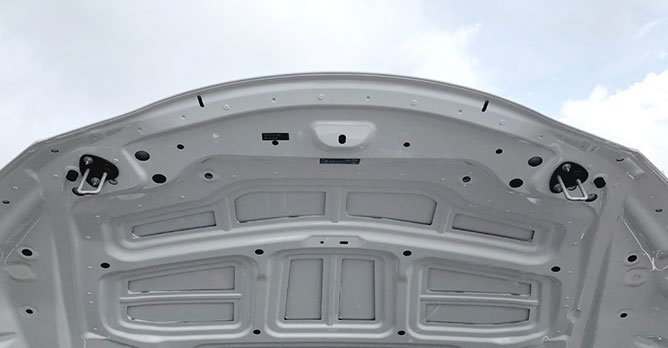
While all the other Toyota models have merely a single latch under its bonnet, the latest A90 GR Supra is one of two Toyota models to have two latches. The only other Toyota model to sport two latches under its bonnet is the Mark4 A80 Supra.
According to Tada-San, his mentor Isao Tsuzuki, who was the Chief Engineer of the A80, said that the Supra was capable of such high speeds that a single latch wasn't enough to keep the bonnet closed.
Talk about being fast and furious.
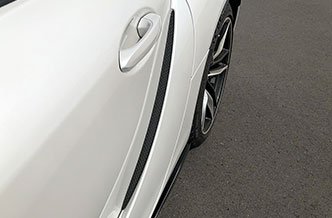 | 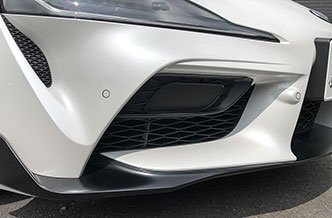 |
A walk around the Toyota GR Supra with a keen eye and you'll realise that quite a number of air ducts are covered up with rubber, making them look like a design flaw.
However, nothing could be further from the truth. While these sorts of bogus aesthetic vents are permanent on several sports cars, it's not on the Supra's. These 'fake vent caps' are covered because as a street car, the Supra doesn't need any more air than it is already getting to cool down. Instead, the seals can be removed for functional aerodynamic and airflow vents during races.
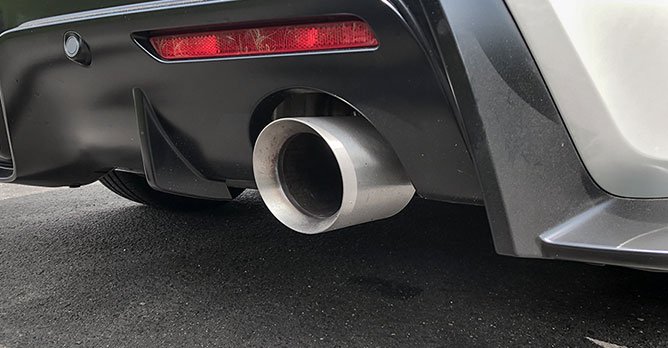
The enhanced soundtrack from the Supra's twin tailpipes comes from its Active Sound Design (ASD). The ASD is an automotive audio application in which the car engine's sound is generated. It's been implemented in several cars like the Lexus GS F and the Renault Clio RS.
In the Toyota GR Supra, 80% of the exhaust note is mechanical, while the other 20% is produced through the speakers.
While this could be a blasphemy to purists, truth is you can hardly notice the difference when you're behind the wheel, thanks to the clear treble sound with 1,200Hz delivery.
8. Save the best for the first
You could get the GR Supra in red or yellow, which are naturally sporty colours. Or you could choose one in a more inconspicuous colour like white, silver or black. But with this sports car, there is nothing more desirable and fitting than having a sporty yet understated colour like matte grey to match the nature of the Supra.
However, the matte grey, which is admittedly the nicest colour I've seen on the Toyota, is limited in numbers. Philippines, for instance, will only be getting one unit of the Supra in this colour. Singapore has requested for 200 units, but it's not yet confirmed if Borneo Motors - authorised distributor of Toyota - will be getting this number.
After two decades, Toyota's sports car bearing the historic moniker is back. No more concept cars, no more teasers and no more camouflaged stories. We finally got behind the wheel of the all new fifth generation Toyota GR Supra.
After a long and sweaty session with the car at Sportsland Sugo, one of the largest motorsports facilities in Sendai, Japan, we found out some really interesting facts about the GR Supra. Here's what you need to know about it.
1. It's a proper partnership... almost
There is no doubting the fact that the GR Supra shares the same chassis, engine, gearbox and other mechanical architecture such as the switchgears with the BMW Z4. Hell, both cars are even built at the same Magna Steyr assembly line in Austria.
However, what many do not know is that the tuning as well as handling of the Supra were all done by Toyota's engineers. According to Chief Engineer Tetsuya Tada, who also oversaw the Toyota 86, neither BMW nor Toyota shared any forms of driving impressions and engineering notes with each other.
2. It's the first road car with GR badging
The GR acronym stands for Gazoo Racing, Toyota's de facto performance brand. With the Japanese marque's experience in motorsports since its first competed in the 24 hours of Nurburgring endurance race in 2007, Toyota Gazoo Racing has developed its cars through motorsports - with a simple goal in mind - making better cars.
Thus, the GR Supra is the first global model in the GR sports car series developed by Toyota Gazoo Racing. In fact, Toyota President Akio Toyoda even mentioned that he was so fed up with spending hours with the A80 Supra to become a master driver that he secretly wanted a Supra revival to happen.
3. Short wheelbase for 86, but even shorter for the Supra
With a wheelbase of just 2,470mm - 100mm shorter than the playful 86 - the Toyota GR Supra has ample leeway for its handling capabilities. Of course its wide tracks of close to 1,600mm as well as its low centre of gravity help a lot in this aspect, too.
On the track in Sportsland Sugo in Sendai, Japan, the latest sports car from Toyota doesn't disappoint one bit. Not only does it utilise its fully useable 335bhp potential, it's confidence-inspiring for an amateur driver like this storyteller to feel like professional driver as I threw the car apex after apex impulsively.
4. Useable power on the track and around town
Speaking of useable power, what a delight the GR Supra is. The low-slung two-seater isn't just made for the track, it's also very much a user-friendly vehicle for two on a daily basis.
While the BMW Z4 is admittedly impressive in its very own right, the Supra feels a tad more down to earth, even with its aggressive design. On public roads where bump, ruts and broken tarmac aren't unusual, the Japanese sports car manages to soak all of them up with pride. It's almost like the Supra has two identities in a single body that it may as well be the strange case of Dr. Jekyll and Mr. Hyde.

5. The tale of two latches
While all the other Toyota models have merely a single latch under its bonnet, the latest A90 GR Supra is one of two Toyota models to have two latches. The only other Toyota model to sport two latches under its bonnet is the Mark4 A80 Supra.
According to Tada-San, his mentor Isao Tsuzuki, who was the Chief Engineer of the A80, said that the Supra was capable of such high speeds that a single latch wasn't enough to keep the bonnet closed.
Talk about being fast and furious.
The rubber seals can be removed to increase airflow during races, which will help cool down the car at a faster rate
6. Just because they're covered, it doesn't mean they're fake
A walk around the Toyota GR Supra with a keen eye and you'll realise that quite a number of air ducts are covered up with rubber, making them look like a design flaw.
However, nothing could be further from the truth. While these sorts of bogus aesthetic vents are permanent on several sports cars, it's not on the Supra's. These 'fake vent caps' are covered because as a street car, the Supra doesn't need any more air than it is already getting to cool down. Instead, the seals can be removed for functional aerodynamic and airflow vents during races.

7. Enhanced exhaust soundtrack
The enhanced soundtrack from the Supra's twin tailpipes comes from its Active Sound Design (ASD). The ASD is an automotive audio application in which the car engine's sound is generated. It's been implemented in several cars like the Lexus GS F and the Renault Clio RS.
In the Toyota GR Supra, 80% of the exhaust note is mechanical, while the other 20% is produced through the speakers.
While this could be a blasphemy to purists, truth is you can hardly notice the difference when you're behind the wheel, thanks to the clear treble sound with 1,200Hz delivery.
8. Save the best for the first
You could get the GR Supra in red or yellow, which are naturally sporty colours. Or you could choose one in a more inconspicuous colour like white, silver or black. But with this sports car, there is nothing more desirable and fitting than having a sporty yet understated colour like matte grey to match the nature of the Supra.
However, the matte grey, which is admittedly the nicest colour I've seen on the Toyota, is limited in numbers. Philippines, for instance, will only be getting one unit of the Supra in this colour. Singapore has requested for 200 units, but it's not yet confirmed if Borneo Motors - authorised distributor of Toyota - will be getting this number.
Thank You For Your Subscription.











